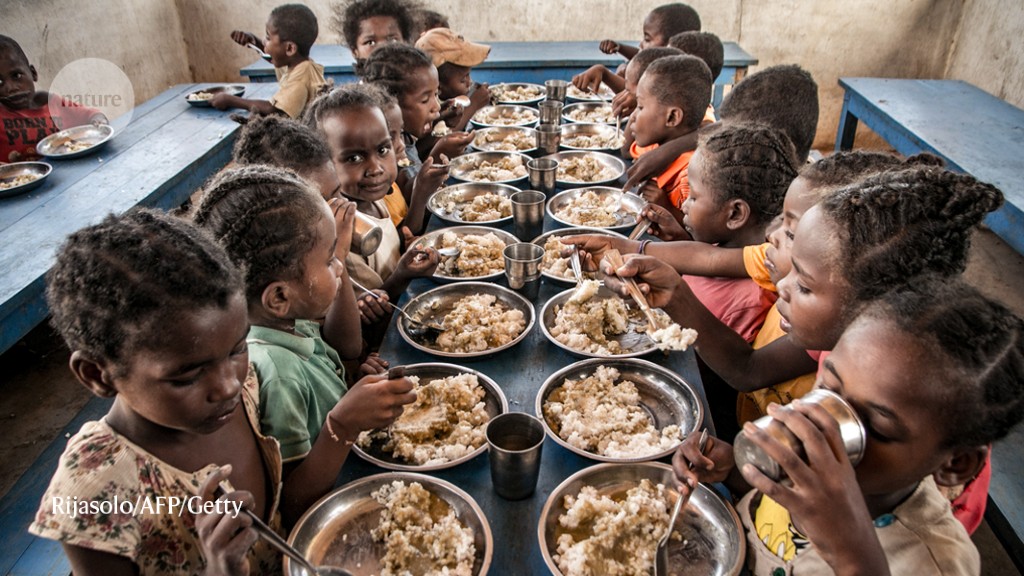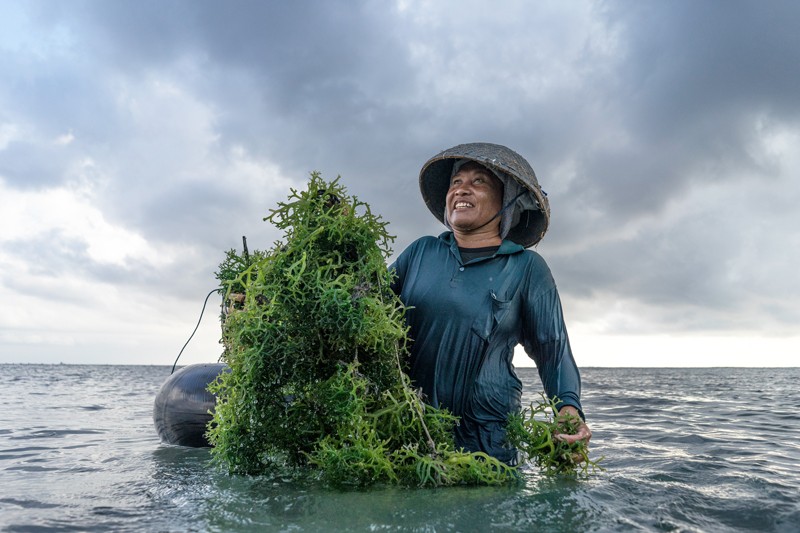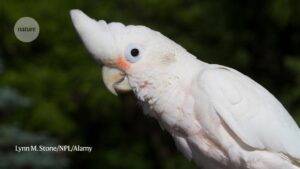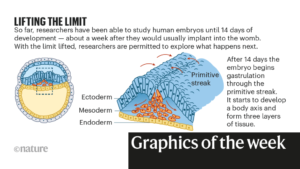Food systems: seven priorities to end hunger and protect the planet
The world’s meals system is in disarray. One in ten folks is undernourished. One in 4 is chubby. More than one-third of the world’s inhabitants can not afford a nutritious diet. Food provides are disrupted by heatwaves, floods, droughts and wars. The variety of folks going hungry in 2020 was 15% greater than in 2019, owing to the COVID-19 pandemic and armed conflicts1.

The world’s meals system is in disarray. One in ten folks is undernourished. One in 4 is chubby. More than one-third of the world’s inhabitants can not afford a nutritious diet. Food provides are disrupted by heatwaves, floods, droughts and wars. The variety of folks going hungry in 2020 was 15% greater than in 2019, owing to the COVID-19 pandemic and armed conflicts1.
Our planetary habitat suffers, too. The meals sector emits about 30% of the world’s greenhouse gases. Expanding cropland, pastures and tree plantations drive two-thirds of the loss in forests (5.5 million hectares per yr), principally in the tropics2. Poor farming practices degrade soils, pollute and deplete water provides and decrease biodiversity.
As these interlinkages turn into clear, approaches to meals are shifting — away from manufacturing, consumption and worth chains in the direction of security, networks and complexity. Recent crises round international warming and COVID-19 have compounded issues. Policymakers have taken word.
In September, the United Nations secretary-general, António Guterres, will convene a Food Systems Summit. This is barely the sixth UN summit on meals since 1943, and the first with heads of states in the UN General Assembly. A gaggle of main scientists, often called the Scientific Group, has been tasked with guaranteeing that the science underpinning the 2021 summit is strong, broad and impartial. We, the authors, are this group’s chair and vice-chairs. Although such approaches are acquainted in areas similar to local weather change and biodiversity, this marks the first time that scientists have been explicitly introduced in to multilateral discussions round meals (see Nature 595, 332; 2021).
(adsbygoogle = window.adsbygoogle || []).push({});
The international meals system wants a revamp — in insurance policies and establishments in addition to on social, enterprise and know-how fronts3. Science is one lens for ensuring that adjustments are built-in and collectively ship higher outcomes. But the activity is difficult. Food spans many disciplines — not least agriculture, well being, local weather science, synthetic intelligence and digital science, political science and economics. The oblique, hostile results of insurance policies on local weather change, biodiversity loss and well being want to be factored in to the true prices of meals; these are estimated to be about twice the present market worth of meals consumption globally4. A variety of voices is essential. The Scientific Group is participating with a whole lot of specialists throughout civil society, together with Indigenous peoples, producer and youth organizations and the non-public sectors.
Here we spotlight the key roles that scientists ought to take to speed up the transformation to more healthy, extra sustainable, equitable and resilient meals methods. These seven priorities replicate the Scientific Group’s proof base, comprising greater than 50 stories and briefs (see go.nature.com/3dtoazu).
Seven priorities
Science-driven advances are wanted to tackle the following challenges.
End hunger and enhance diets. Scientists want to establish optimum circumstances and alternatives for investments to make wholesome and nutritious meals extra accessible, inexpensive and accessible. Measures that collectively enhance a couple of of those are best. For instance, elevated irrigation on small farms in Tanzania and Ethiopia has enhanced productiveness, dietary variety and farmers’ incomes5.
Three massive game-changers are: enhancing analysis and growth in agriculture and meals to improve productiveness in a sustainable means; slashing meals waste and losses; and including earnings and vitamin elements to social-protection programmes. Research priorities to minimize waste embrace scaling up photo voltaic vitality and battery storage applied sciences to make meals processing and preservation extra inexpensive. New types of packaging utilizing recycled supplies, coatings of nanomaterials and even edible movies would preserve meals recent for longer. School feeding programmes, along with incentives to preserve youngsters in training (similar to take-home rations for fogeys) have seen success in Mali, for instance, the place they elevated faculty enrolment by 10 proportion factors6. Under COVID-19 lockdowns, most of these programme grew to become much more related.
Researchers additionally want to research behavioural boundaries to wholesome consuming, similar to snacking below stress. They ought to develop coverage tips for instructional meals labels, and mannequin the impacts of placing taxes and laws on unhealthy meals (similar to sugar and trans-fats). The well being properties of fortified meals and cultivated meats should even be established.
De-risk meals methods. The extra international, dynamic and advanced meals methods turn into, the extra open they’re to new dangers. Scientists want to enhance how they perceive, monitor, analyse and talk such vulnerabilities. For instance, droughts, the enlargement of biofuels and monetary hypothesis after the sudden imposition of commerce boundaries led to meals value hikes in 20087. The COVID-19 pandemic and armed conflicts have shaken meals worth chains throughout Africa this yr, driving up meals costs. Successful initiatives exist, combining on-the-ground observations of meals methods and vitamin with forecasting. These embrace FEWS NET (https://fews.net) and the joint analyses from the UN Food and Agriculture Organization and the World Food Programme on early warnings of meals insecurity8.
Policies and financial options are wanted. For instance, new insurance coverage merchandise aided by distant sensing and climate forecasts would supply cowl for misplaced crops and livestock. Solar-powered irrigation methods would cut back danger from drought. Smartphone apps would supply farmers with data on native crop pests, climate dangers and market alternatives; these are already utilized in Kenya, Senegal, India and Bangladesh9. Payment schemes are wanted to encourage farmers to handle and seize carbon in soils and timber, and to commerce it.
Protect equality and rights. Poverty and inequalities related to gender, ethnicity and age limit many individuals’s entry to wholesome meals. Socio-economic researchers want to recommend inclusive methods to rework the greater than 400 million smallholder farms worldwide. They should establish pathways out of inequitable and unfair preparations over land, credit score and labour, and empower the rights of girls and youth. For instance, if female-headed households in southern Ethiopia had the identical assets as male-headed ones, their productiveness in maize (corn) would improve by greater than 40%, to match that of the latter10.
Protecting the land rights of smallholders, girls and Indigenous peoples is paramount. Technology can guarantee transparency and effectivity. For instance, utilizing blockchain ledgers of possession rights to allocate land may very well be a possibility in Ghana11. At the trans-national scale, the Land Matrix Initiative collects and shares knowledge on massive land acquisitions and investments in low- and middle-income nations; it covers offers in nearly 100 nations worldwide. Similar options are wanted to protect the land rights of Indigenous peoples12. Also required are efforts to construct native analysis capability, instructional programmes round meals and farming, and coaching and financing alternatives in rural areas.
Boost bioscience. Researchers want to discover methods to restore soil well being and enhance the effectivity of cropping, crop breeding and recarbonizing the soil and biosphere. Linkages amongst all Earth methods have to be thought-about collectively — often called a One Health strategy (see go.nature.com/3jy7ekh).
Alternative sources of wholesome protein want to be superior, similar to plant-based and insect-derived proteins, together with for animal feed. Plant-breeding strategies that seize nitrogen from the air, to cut back the want for fertilizers and improve vitamins, ought to be investigated. Genetic engineering and biotechnology ought to be utilized to improve the productiveness, high quality and resistance of crops to pests and drought. Recent examples embrace banana varieties which are resistant to Fusarium wilt fungal illnesses, and pest-resistant Bt aubergines. To widen entry to bioscience applied sciences, intellectual-property rights, abilities and knowledge sharing ought to be addressed.
Protect assets. Tools are wanted to assist folks to handle soils, land and water sustainably. For instance, hand-held digital gadgets and distant sensing can monitor concentrations of soil carbon and different vitamins. Artificial-intelligence methods and drones enable farmers to spot areas that want irrigation, fertilization and safety from pests. Soil microbes may be harnessed to enhance soil construction, carbon storage and yields. Researchers want to adapt and scale up such applied sciences.
Biodiversity and genetic bases want to be protected. Seed varieties have to be preserved, and their phenotypes and genotypes explored in the contexts of local weather change and vitamin. Traditional meals and forest methods, together with these of Indigenous peoples, want to be higher understood and supported in nationwide agricultural analysis methods. Cooperation for mutual profit ought to be explored, as has been performed for local weather adaptation in US Indigenous areas13.
Sustain aquatic meals. Most of the concentrate on meals to date has been on soil-based agriculture. Fish, shellfish and aquatic crops similar to seaweed have a lot to supply nutritionally and environmentally. Aquatic foods need to be better integrated into the understanding of meals methods14. Researchers ought to search for methods to improve dietary variety in aquatic meals and sequester carbon in marine and freshwater environments.
Ecological-science views and international cooperation and establishments are wanted to make harvesting of oceans, coastal waters and freshwater assets sustainable and protect biodiversity. The sustainability of fish-feeding methods wants consideration; for instance, by exploring the use of insect rearing, oil-rich modified legumes and micro-algae as fish feed.
Harness digital know-how. Robots, sensors and synthetic intelligence are more and more used on farms: to harvest crops and milk cows, for instance. Sensors can monitor the origin and high quality of components and merchandise alongside the food-processing chain to cut back losses and assure meals security. But most farmers and producers nonetheless don’t have entry. To unfold the advantages, gadgets want to turn into cheaper and simpler to buy and use. Rental providers comparable to Uber for farm equipment ought to be developed, as has been performed with tractors in India. Rural electrical energy provides can have to be expanded, together with IT coaching and training.
First steps
The 2021 Food Systems Summit is a superb alternative to end hunger by 2030 and set in prepare a sustainable meals system. Previous summits have delivered change: creating the FAO (after 1943); strengthening the international food-research partnership CGIAR and founding the International Food Policy Research Institute (after 1974); accelerating the human proper to meals (2002); and establishing monitoring methods to warn of food-price crises (2009).
The breadth of the 2021 agenda may very well be a hindrance, nevertheless, to attaining its targets. To keep away from failure, delegates ought to focus. They ought to prioritize establishing a guiding framework — for reworking numerous nationwide and native meals methods, in addition to international networks, with the challenges of commerce, finance, local weather, innovation and governance.
Debates can be fierce. Food is a contentious subject. Disagreements abound over targets, pathways and velocity of change, and the roles of science and know-how, the non-public sector and the UN. For instance, some see agroecology as the solely acceptable means of farming; some view biotechnology and gene modifying as risks; others see alternatives. The Scientific Group has aimed to supply a scientific foundation to this variety of views.
Actions and targets
Once plans are agreed, the UN Food Systems Summit will want to transfer to implementation. Here are our recommendations.
First, increase finance. On the analysis entrance, we suggest that governments allocate to meals analysis at the very least 1% of the proportion of their nations’ gross home product that relates to meals methods. Many nations spend solely half of that. Least-developed nations ought to be given assist to attain an identical degree. To end hunger for the poorest, we suggest the institution of a particular fund. This can be supported by development-aid donors and bonds backed by the International Monetary Fund and World Bank. Research and modelling can be required on implementation and impacts.
Second, improve scientific capability. The particular fund may very well be used to strengthen analysis capability in low- and middle-income nations, and develop analysis collaborations between the public and non-public sectors, and amongst farmers, start-up companies in meals worth chains and science communities. Sharing analysis infrastructure and knowledge between the international south and international north can be a very good begin.
Third, strengthen science–coverage interfaces. In stark distinction to many different fields, agriculture, meals safety and vitamin do not need a global settlement or conference to consolidate actions. We name on the UN Food Systems Summit and UN member states to discover an intergovernmental treaty or framework conference on meals methods, analogous to the conventions on local weather, biodiversity and desertification agreed on in Rio de Janeiro in 1992. The framework will want to embrace a powerful impartial scientific physique that gives coverage recommendation in the follow-up to the summit. We advocate that every one science organizations and academies with food-relevant analysis be included in a preparatory course of.
Bringing the instruments of science to the desk will assist to rework the international meals system to end hunger and obtain the UN Sustainable Development Goals by 2030.





